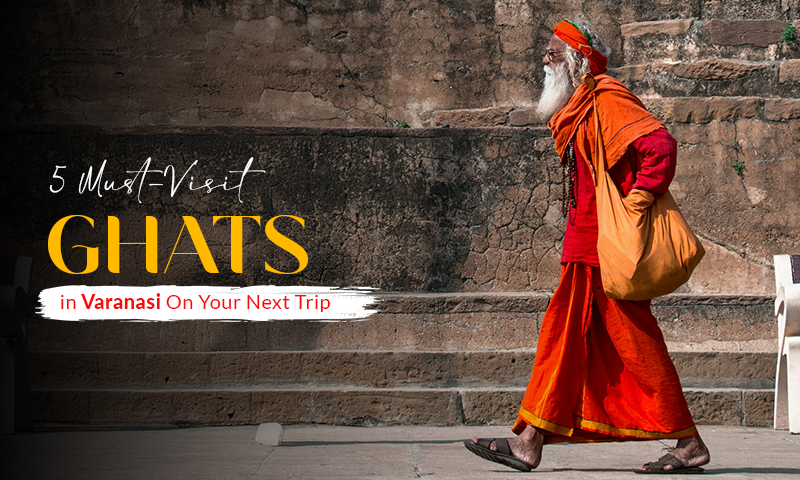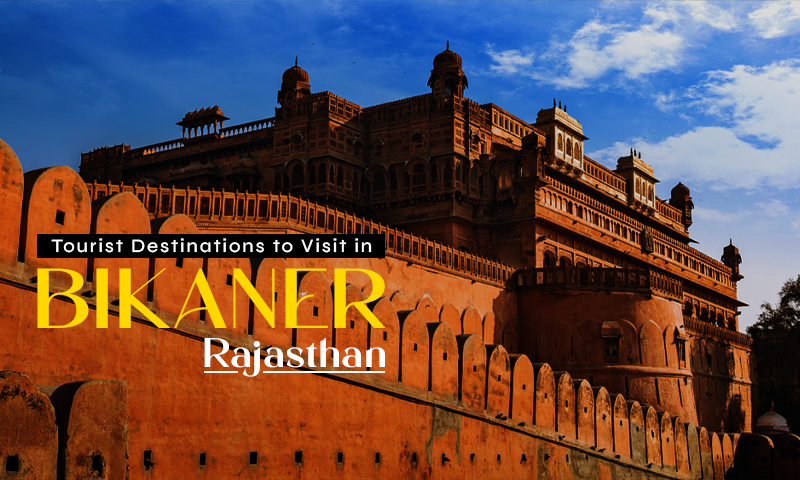5 Must-Visit Ghats in Varanasi On Your Next Trip
5 Must-Visit Ghats in Varanasi On Your Next Trip
Varanasi, often called Kashi or Banaras, is one of India’s oldest and holiest cities. It is a spiritual centre where the Ganga River’s sacred water embraces the shore, and ancient traditions breathe life into the modern world. At the heart of Varanasi lies its iconic Ghats, where people gather to perform daily rituals, participate in festivals, and seek spiritual solis. If you plan a trip to Varanasi, visiting its Ghats is a worthy experience. They are not just scenic spots but also a pasturing centre of history, spirituality, culture, and daily life. In this blog, we, Memorable India, will shed light on 5 top ghats in Varanasi, each with its unique significance and allure:
Famous Varanasi Ghats:
With almost 100 ghats, here is the list of a few of the spiritual ghats of Varanasi that are worth visiting when you are on a trip to the city:
1. Dashashwamedh Ghat:
Significance: Dashashwamedh Ghat is the heart of Varanasi’s spiritual life. It is arguably the most famous and most-visited Ghats in Varanasi. Steeped in mythology and spiritual significance, this ghat is believed to be the site where Lord Bharma performed the grand Yajna to welcome Lord Shiva in the city. According to the Hindu legends, the name Dashashwamedh Ghat translates to ten horse sacrifices, as ten horses are sacrificed (Ashwamedha) during the yagna.
Why Visit: Dashashwamedh Ghat is a hub of Varaansi’s cultural and spiritual activities. Thousands of devotees and tourists gather here to witness the mesmerizing ‘Ganga aarti ‘ performed by the priests with great devotion and precision each evening. The sight of the priests waving flaming lamps in synchronization with chants amidst the rhythmic sounds of bells and shells creates an unforgettable spiritual atmosphere. Apart from the Aarti, this spiritual ghat of Varanasi is bustling with activities throughout the day. You can take a boat ride on the Ganga River for a unique perspective of the Ghats and temples or sit by the riverside to watch life unfold.
Tip: Arrive early to secure a good spot for the Ganga Aarti, as this popular ritual draws a large crowd every evening.
2. Assi Ghat:
Significance: Assi Ghat is located at the southernmost point of Varanasi and is one of the oldest and historic ghats in Varanasi. The ghat is associated with the worship of Goddess Durga, and it is said that the Goddess threw her sword in the Assi river after killing the demons Shumbha-Nishumbha, making it an important centre of devotion. The name Assi is derived from the river Assi. Unlike the hustle and bustle of Dashashwamedh Ghat, this ghat exudes a calm and serene atmosphere. The ghat is where Tulsidas completed the Ramcharitmanas.
Why Visit: This is among the cultural ghats of Varanasi. It is a perfect place for a peaceful morning stroll along the banks or to engage in a quiet meditation session by the Ganga River. In the morning, you will find the Yoga enthusiasts practising their Ashna, while in the evening, you can enjoy a tranquil atmosphere or catch a small-scale Ganga Aarti ceremony. Also, it is famous for its cultural events, lively atmosphere, and musicians. You can also take a boat ride on the Ganga to explore other ghats while enjoying the tranquil atmosphere.
Tip: Visit in the early morning to witness the admiring sunrise and Ganga Aarti. Also, wear modest clothes and be mindful of local traditions.
3. Man Mandir Ghat
Significance: Man Mandir Ghat is one of the lesser-known but historically significant ghats in Varanasi. It is named after the Man Mandir palace built by Maharaja Man Singh of Amber, a prominent ruler in the 16th century. Counted as the best ghats to visit in Varanasi, it is associated with the royal patronage of the Maharaja, who constructed the palace and built a series of temples and observatories in the area. The ghat and its surroundings reflect a fascinating blend of Vedic, medieval, and architectural heritage, with its ornate structures and scenic views offering a glimpse into Varanasi’s regal past.
Why Visit: Man Mandir Ghat stands out for its combination of historical, architectural, and spiritual significance. The ghat features a beautiful palace that juts out towards the river, complete with intricately designed windows and balconies offering views of the Ganges. Though partially in ruins, the palace still exudes a majestic aura, transporting visitors back to the era of Mughal rule. In addition to the palace, Man Mandir Ghat is home to a fascinating astronomical observatory built by Maharaja Man Singh himself. The observatory, known as the Jantar Mantar, is a must-see for those interested in ancient astronomy and science. Some instruments are still preserved, providing a rare look at the blend of science and spirituality in Varanasi’s past.
Tip: For history enthusiasts and photography lovers, this provides a unique opportunity to capture the splendour of ancient Indian architecture and the stunning riverside views. Arrive in the morning for a serene experience or during sunset for the most dramatic light over the Ganges.
4. Chet Singh Ghat:
Significance: Chet Singh Ghat, located along the Ganga in Varanasi, is a historically rich site known for its association with the 18th-century battle between Chet Singh, the ruler of Banaras and the British East India Company. Named after Maharaja Chet Singh, this Ghat is the home to the remnants of the Chet Singh Fort, which overlooks the river and stands as a reminder of ferrous resistance against colonial rule. The fort and ghat together narrate an intriguing tale of defined bravery in the face of British expansion. The ghats’ quiet and reflective atmosphere offers a chance to connect with Varaanasi’s history of resistance.
Why Visit: Chet Singh Ghat is a hidden gem that combines history, tranquillity, and stunning views of Ganga. Unlike the more crowded ghats of Varanasi, this ghat provides a peaceful escape, allowing visitors to reflect on the past while taking into the serene surroundings. The fort offers fascinating insights into the architectural style of the time and commands a scene view of the river below. The ghat is less commercial, offering a more authentic experience of local life. You can witness the daily rituals, watch the sunrise over the river, or enjoy the quiet tune that sets it apart from the city’s other busier ghats.
Tip: Visit in the early morning or late evening when the light is softer, and the ghat offers the experience of tranquility. Photography enthusiasts will appreciate the contrast of the ancient fort against the flowing river.
5. Scindia Ghat:
Significance: Scindia Ghat holds significant historical and cultural importance. Named after the Scindia family, ruler of Gwalior, this ghat is renowned for its royal connection and role in various religious and cultural activities. The ghat is associated with the grandeur of the Maratha dynasty, particularly the Scindia family. The ghat is an essential site for pilgrims visiting the city as it holds various religious ceremonies and rituals. Its location along the river makes it an ideal spot for evening prayers and a famous Ganga Aarti. The ghat is not only an architectural marvel but also a place where the deep spiritual and historical fabric of the city can be felt.
Why Visit: This Varanasi ghat for tourists offers a mix of royal heritage, spirituality, and breathtaking views of the Ganga. While it might not be as famous as some other ghats, it has a unique charm with less of the crowd. Visitors can experience a sense of peace and serenity while enjoying the beautiful surroundings of the rover. The ghat is perfect for those who wish to witness the authentic rituals of Varanasi without the overwhelming presence of tourists.
Tip: Go in the early morning or evening for a peaceful and meditative experience. Wear comfortable clothing and footwear, and be prepared for walking.
6. Wrapping Up For Varanasi Ghats for Tourists!
Varanasi Ghats are not just places of religious ritual but also places of living and breathing expressions of India’s rich spiritual and cultural heritage. From the grand spectacle of the Ganga Aarti to the reflective peace at Man Mandir Ghat, each of these sacred spots offers something unique. Whether you are here for a spiritual awakening or simply to immerse yourself in the rhythm of this ancient city, the ghats of Varanasi will leave an indelible impression on your soul. So, book your next trip to this mystical city with Memorable India’s pilgrimage tours in India and explore these must-visit ghats and experience the timeless magic of Varanasi!





